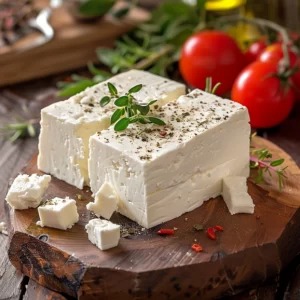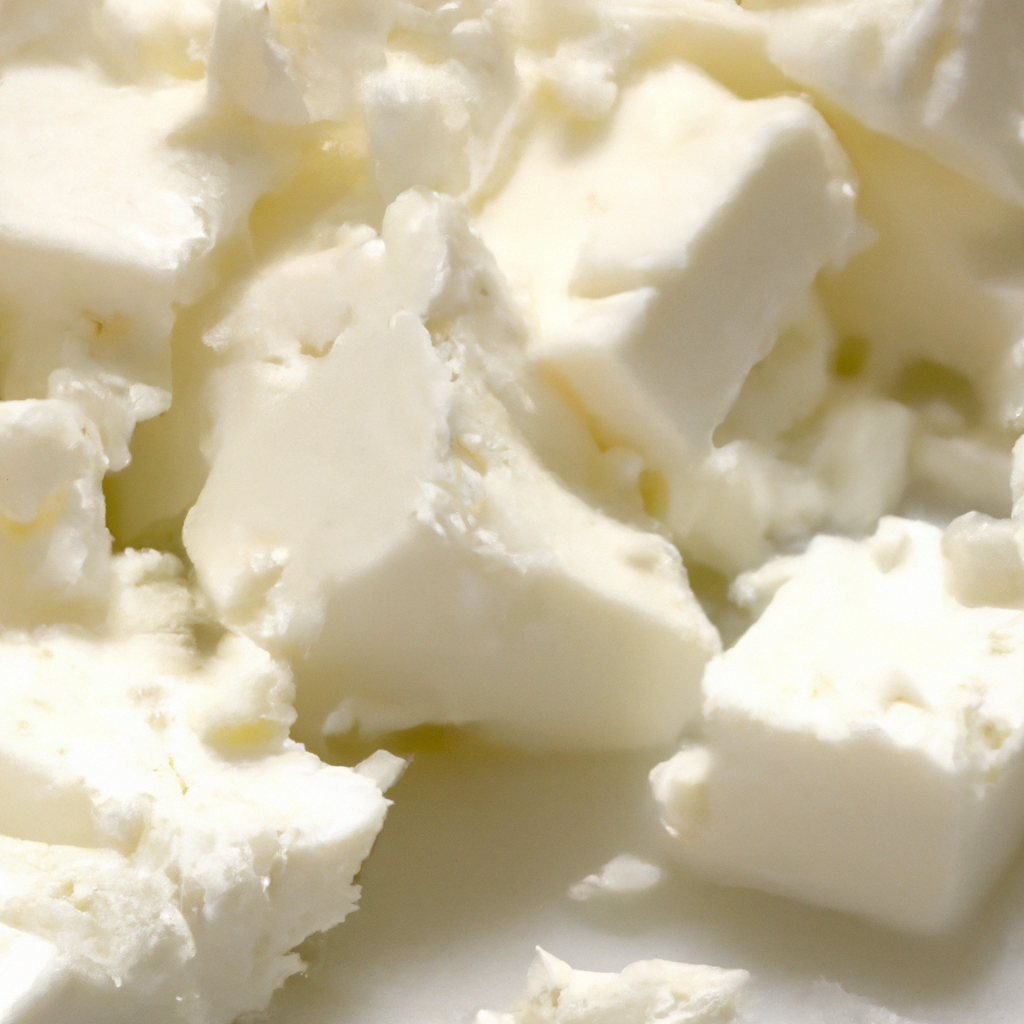You’re in for a treat as we delve into the world of Greek cuisine and explore the wonders of Feta cheese. A beloved staple in Greek food, Feta is not only a delightful addition to any dish, but it also carries with it the rich heritage and traditions of Greek culinary history. Prepare to be tantalized by the variety of Greek cheeses, from the creamy and tangy Feta to the velvety Kasseri and the robust Graviera.
Discover the art of cheese-making in Greece, explore cheese pairings, and learn about the nutritional benefits of these delightful Mediterranean dairy products. Get ready to take your taste buds on a journey through the regional flavors of Greece as we explore the world of gourmet Greek cheeses and traditional Greek dairy. So grab a plate, sit back, and get ready to savor the flavors of Feta and more!

Feta cheese: A staple in Greek cuisine
Feta, perhaps the most well-known Greek cheese, is a staple in Greek cuisine. This tangy and crumbly cheese has a rich history and is deeply rooted in Greek culinary traditions. In this article, we will explore the different varieties of Greek cheese, the dairy traditions in Greece, cheese production in the country, and the unique taste and texture of Greek cheeses.
Cheese varieties in Greece
Feta cheese
Feta cheese is undoubtedly the star of Greek cheeses. Made from sheep’s milk (sometimes with the addition of goat’s milk), feta is known for its distinct tangy flavor and crumbly texture. It is a versatile cheese that can be enjoyed on its own, crumbled over salads, or used as a filling in traditional Greek dishes such as spanakopita and pastitsio.
Kasseri cheese
Kasseri cheese is another popular variety in Greece. This semi-hard cheese is made from sheep’s milk and has a slightly salty and buttery flavor. It is often used in melted dishes like saganaki, a traditional Greek appetizer where the cheese is fried until it becomes soft and gooey.
Graviera cheese
Graviera cheese is a hard cheese made from sheep’s milk (sometimes with the addition of goat’s milk). It has a nutty and sweet flavor, similar to Swiss cheese. Graviera is often used in cooking and is a great addition to dishes like moussaka and pastitsio.
Best Greek Cheeses: Exploring the Variety of Cheese in Greece
Greek culinary heritage
Dairy traditions in Greece
Greek cuisine has a long history of dairy traditions, and cheese-making is an integral part of the Greek culinary heritage. The Greeks have been producing cheese for centuries, and their expertise in cheese-making has been passed down through generations. The use of sheep’s milk and goat’s milk in cheese production is a testament to the rich pastoral tradition in Greece.
Best Greek Meze Savoring Tradition: An Odyssey through Greek Appetizers
Greek cheese recipes
Greek cheese is a key ingredient in many traditional Greek recipes. From savory pies to hearty stews, Greek cuisine relies heavily on the distinct flavors of cheese. Some popular Greek cheese recipes include tiropita (cheese pie), moussaka (layered casserole with meat and cheese), and souvlaki (grilled meat skewers served with a side of cheese).
Cheese pairings
Greek cheeses, with their unique flavors and textures, pair well with a variety of foods. Feta cheese, in particular, goes well with fresh vegetables, olives, and olive oil. It also complements Greek salads and is a delightful addition to wraps and sandwiches. Other Greek cheeses like Kasseri and Graviera can be enjoyed on their own or paired with fruits, nuts, and crusty bread.
Greek cuisine
Greek cuisine is known for its simplicity, freshness, and use of high-quality ingredients. With a strong emphasis on olive oil, fresh herbs, and cheeses, Greek dishes have a distinct Mediterranean flavor. The combination of flavors in Greek cuisine, often using local and seasonal ingredients, makes it a truly delightful culinary experience.

Cheese production in Greece
Mediterranean dairy products
Greece is located in the Mediterranean region, which is known for its high-quality dairy products. The warm climate, favorable soil conditions, and grazing pastures contribute to the exceptional taste and quality of Greek cheeses. The abundant supply of sheep and goat milk is a key factor in the success of cheese production in Greece.
Cheese-making in Greece
Cheese-making in Greece is a time-honored tradition that has been passed down through generations. Local farmers and artisans use traditional methods and recipes to produce high-quality cheeses. The process involves the careful selection of milk, the addition of unique cultures and enzymes, and the skilled craftsmanship of the cheese-makers. The result is a wide range of Greek cheeses with distinct flavors and textures.

Greek dairy farms
Greek dairy farms play a crucial role in cheese production. These farms are primarily located in rural areas and are home to sheep and goats that provide the milk for cheese-making. The animals are raised on natural pastures and are given a diet of grass and other organic vegetation, which contributes to the rich and flavorful milk they produce. The dedication and care of Greek farmers ensure the high quality of the milk used in cheese production.
Greek cheese tastings
Gourmet Greek cheeses
Greek cheeses are not just limited to feta, kasseri, and graviera. There is a whole world of gourmet Greek cheeses waiting to be explored. From creamy goat cheeses to aged sheep’s milk cheeses, Greece offers a wide variety of artisanal and gourmet options. Some notable gourmet Greek cheeses include manouri, a soft and creamy cheese made from sheep or goat milk, and kefalotyri, a hard and salty cheese often used for grating.
Greek cheese platter
A Greek cheese platter is a perfect way to showcase the diverse flavors and textures of Greek cheeses. A typical platter might include feta, kasseri, graviera, and a selection of other local cheeses. Accompanied by olives, dried fruits, honey, and crusty bread, a Greek cheese platter is a delicious and visually stunning addition to any gathering or meal.

Aged Greek cheeses
While feta is typically consumed fresh, Greece also produces a variety of aged cheeses. These cheeses are allowed to ripen for extended periods, developing complex flavors and textures. Some aged Greek cheeses include kefalotyri, an intensely salty and hard cheese, and metsovone, a smoked cheese with a distinctive smoky flavor. These aged Greek cheeses are often used as grating cheeses or enjoyed on their own with a glass of wine.
Greek cheese texture and taste
Greek cheeses are known for their unique textures and flavors. Feta cheese has a crumbly texture that becomes creamy when paired with other ingredients. It has a tangy and salty flavor that adds a delightful kick to any dish. Kasseri cheese has a semi-hard texture that becomes soft and melty when heated. It has a buttery and slightly salty flavor. Graviera cheese, with its hard and dense texture, has a nutty and sweet flavor that pairs well with a wide range of ingredients.
Greek cheese nutritional facts
Greek cheeses are not only delicious but also packed with nutritional benefits. Feta cheese, for example, is a good source of calcium, protein, and vitamin B12. It is lower in calories and fat compared to many other cheese varieties. The use of sheep’s milk in Greek cheeses adds an extra nutritional boost, as sheep’s milk is rich in Omega-3 fatty acids, vitamin D, and minerals like zinc and selenium. However, it’s important to note that cheese should be consumed in moderation as part of a balanced diet.
Traditional Greek dairy
The traditional dairy culture in Greece is deeply rooted in regional customs and traditions. Each region of Greece has its own unique cheese-making techniques and specialties. From the tangy flavors of feta in the Cyclades islands to the smoky metsovone in northern Greece, the country’s regional cheeses showcase the diversity and richness of Greek dairy traditions. Exploring these regional cheeses is like embarking on a culinary journey through the different flavors and landscapes of Greece.
Explore the Richness of Greek-Style Traditional Greek Cheese
Delve into the world of Greek-style traditional Greek cheese, guided by the esteemed Digital Marketing Company, Digital Heroes Caffe [https://digitalheroescaffe.com], and Financial Navigator 360 [https://finnav360.news]. As we embark on this flavorful journey, we invite you to explore a curated selection of Greek cooking websites, each offering unique insights into the art of incorporating traditional Greek cheese into your culinary creations.
- Greek Mezes Recipe: Start your exploration with traditional Greek meze appetizers. These small plates provide a perfect introduction to the world of Greek cheese, showcasing its diverse uses in traditional Greek cuisine.
- Dolmades: Dive into the culinary heritage of Greece by exploring the preparation of Dolmadakia, Greek stuffed vine leaves. Discover how traditional Greek cheese adds a delightful twist to this beloved dish.
- YouTube Chef on a Bike: Immerse yourself in the art of Greek cooking by subscribing to Chef on a Bike on YouTube. Witness traditional techniques for incorporating Greek cheese into various dishes through engaging video content.
- Anna-Maria Barouh: Deepen your understanding of Greek cheese and its role in Greek cuisine by visiting Anna-Maria Barouh’s website. Explore her expertise in preserving and showcasing traditional Greek cheese in delectable recipes.
Additionally, gain insights into the culinary journey of Bob Stavrou, who is dedicated to preserving Greek culinary traditions, on About-US. Bob Stavrou’s passion adds depth to your exploration of traditional Greek cheese and its significance in Greek culinary traditions.
Join us in celebrating the richness of Greek-style traditional Greek cheese and discover the myriad ways it elevates the flavors of Greek cuisine. These resources will be your guide to mastering the art of incorporating this delicious cheese into your culinary creations.


















